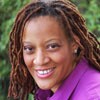There is a powerful shared narrative around entering the teaching profession, and it’s couched in the language of survival. We constantly hear phrases like “sink or swim,” “the first year is the hardest,” “the toughest thing I ever did.” This is the challenge facing those who want to teach: being thrown into a classroom and figuring out how to “make a difference.”

Heather Harding
The sad reality is many teacher education programs are not built to meet the demands of first-year teaching. There are two reasons this should worry us. First, most teacher training is not focused enough on the foundations of teaching, nor on how to meet the needs of our nation’s most disadvantaged students. Second, even when these teachers are well prepared, we then drop them into an antiquated school model: 30 students for every adult, paper-and-pencil practice, minimal collaborative or group work, seven-hour school days, and 180-day school years.
In order to unleash the power of excellent teaching, we have to make sure that teacher-training programs are setting teachers up to succeed in the classroom and pursue innovative pedagogical approaches. By providing imaginative, thoughtful training, we can produce well-prepared teachers and transform the schools in which they work.
Teacher-preparation programs—whether traditional routes or alternatives like Teach For America—need to focus on three elements to help teachers succeed. The first is subject mastery. Teaching candidates need to have mastered a basic liberal-arts curriculum and then pursued a level of expertise in a content area relevant to what they will teach. This could be a traditional undergraduate major or a nontraditional course of study that can be measured via a rigorous assessment.
The second is curriculum. New teachers need a solid foundation of basic theory and empirical research into the different phases of student development. Programs must also offer direct clinical experiences working with children, supervised by master-teachers who can offer guidance on the “tools of teaching:" planning, management, delivery, and assessment. With this combination of foundational knowledge and clinical practice, beginning teachers can start to re-imagine their school environments while benefiting from the wisdom of master-teachers.
The final element is sociocultural issues. Children in different communities, from different cultural backgrounds, with different family realities, have different needs. We need to expose new teachers to the cultural and social realities their students face, as well as the historical and systemic forces that have contributed to our deeply unequal public schooling system. Preparation programs must address important contextual issues that influence teacher-student-family dynamics, so that new teachers are not blindsided once they enter the classroom.
This is asking a lot of those who prepare our new teachers to teach. But we need to set a much higher bar. It’s not enough to counter the notion that “anyone can teach.” We must also insist that only masterful, thoughtful, and proven educators can adequately teach the teachers. If we make teacher preparation a more privileged role, we can successfully reach for the new world in public education.
Heather Harding is the senior vice president for community partnerships with Teach For America. She has worked as a classroom teacher and in teacher education, professional development, and empirical research. In her current role, she oversees TFA’s partnership work in the areas of research, community engagement, and special initiatives in early-childhood education and STEM. Follow her on Twitter at @HeatherHJ.